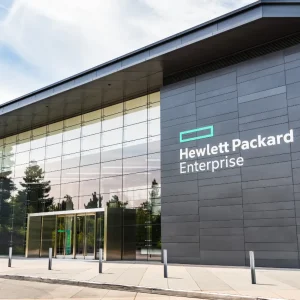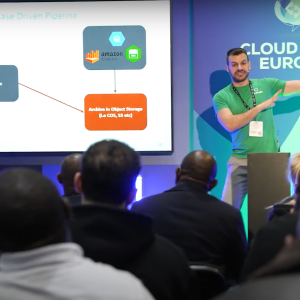
Before the pandemic, businesses were already turning to cloud technologies. It has changed the way businesses store their data, the way employees collaborate and exchange information with each other and ultimately, the way businesses are run, writes Vincent English, CEO of Megaport. The onset of the pandemic and mass lockdown has forced many business leaders to put their projects on hold, and yet, cloud spending remains resilient, according to the Worldwide Black Book report from IDC.
The advantages of adopting cloud services and apps has been made obvious in light of the lockdown. What’s often overlooked, however, is the network infrastructure underneath. As Joe Skorupa, an analyst at Gartner, argues: “When businesses decide to move to the cloud, the network tends to be an afterthought.”
But businesses now need to recognise that network strategies are critical to enabling robust, reliable connectivity between different services and environments. The network infrastructure acts as the foundation that supports the daily tasks that employees must carry out, that enable the cloud services and apps to run. So, how can businesses ensure they can reap the rewards of adopting cloud?
Accelerating to the cloud: Setting up network connections doesn’t need to be this painful
IT modernisation can mean many things, but for the majority, this involves the adoption of digital technologies to find efficiencies, improve existing processes, and cultivate innovation. To achieve this, many are racing to the cloud – though in different ways.

Some companies are opting for a hybrid cloud approach, which enables them to design a network foundation that fits their exact specifications, as opposed to following a single out-of-the-box solution. Other companies are turning towards a multi-cloud approach, choosing multiple providers and spreading their key workloads across them for the best possible performance.
Regardless of the approach a company takes, connectivity is key in making their digitisation plans a reality. All cloud models need consistently performing and flexible connectivity between the environments that comprise them, resilient to network outages and disruption. Crucially, companies must have the capabilities to set up, shut down and re-establish connectivity on a whim, rapidly.
However, setting up a network connection has traditionally been a long and laborious process. Traditional point-to-point circuits have to be established in order to connect to cloud, making the process time-consuming and cumbersome. Moreover, it can tie organisations to long-term commitments such as contract length and minimum capacity spend. Public internet connections also do not offer the secure, low-latency performance required by many.
Cross connects can resolve security and latency issues, but long lead times, location limitations (available only within a data centre environment), and the inflexibility of passive connections make integration challenging, especially when you’re trying to integrate data from many different providers. You achieve the cloud model you want, but only after much pain and by forfeiting most of its benefits.
Networking with a simple click
Hybrid and multi-cloud ecosystems need a private, direct, and flexible solution to support business needs as they change across multiple cloud and on-premises environments. Yet current networking approaches make this harder than it should be.
In the case of multi-cloud ecosystems, businesses must purchase separate network capacity for each cloud zone and terminate traffic into a physical router that’s managed and owned by the company. Not only does this take a lot of time and effort to set up, it is also expensive and does not align with the on-demand, pay as you go model of cloud services. In addition to acquiring and managing extra routing hardware, there are significant capacity costs to consider. If an organisation can’t route traffic efficiently and flexibly, the entire approach to multi-cloud traffic management can end up hugely expensive in both the short and long-term.
Clearly, organisations need a new approach to connectivity, one that resolves the various issues that traditional approaches present. But what would this “new approach” look like?
Just as Spotify has transformed the music industry, allowing people to simply click and listen to whatever music they want, wherever they are, connectivity should be this simple. Connecting to the cloud should be easy and quick. This level of flexibility, however, can only be achieved with a software-defined approach to networking. Instead of relying on physical connectors or the public internet to link to the cloud, everything is mediated through a software layer that connects your full infrastructure.
A Network as a Service (NaaS) platform greatly simplifies the process of creating and provisioning hybrid and multi-cloud networks. Whether you’re transferring one workload to another cloud or want to scale down capacity when traffic is low, this can be accomplished in minutes, not days or weeks. The advantages of this approach mean that organisations can benefit from the stability and speed of cross connects, and the flexibility and rapid provisioning of virtualised networking simultaneously.
With an unprecedented number of new technologies entering the workplace, especially with the rapid changes that the pandemic has introduced, businesses have to be more agile than ever. With a software-defined network, accessing a new CSP or scaling capacity becomes as easy as streaming your favourite song or podcast. As Spotify has demonstrated, changing the way we listen to music, imagine how the IT industry will be transformed when cloud connectivity is just a click away and no longer such a laborious and costly process.






